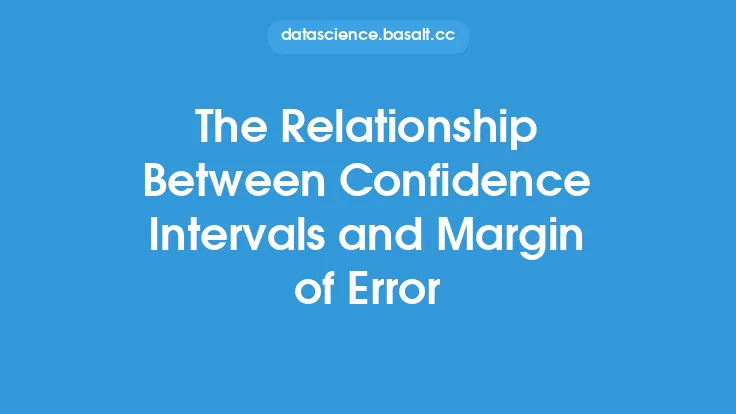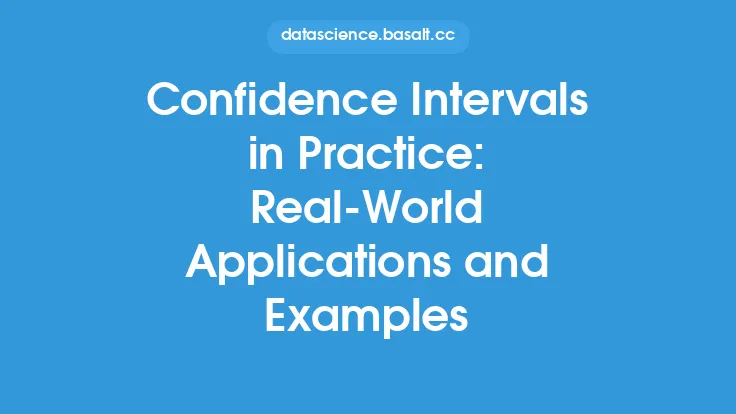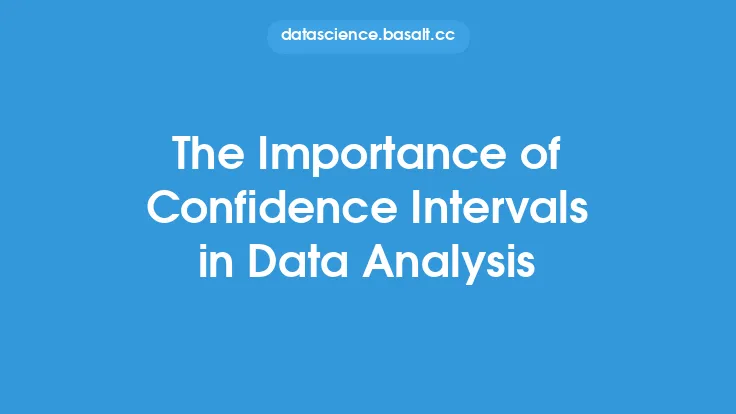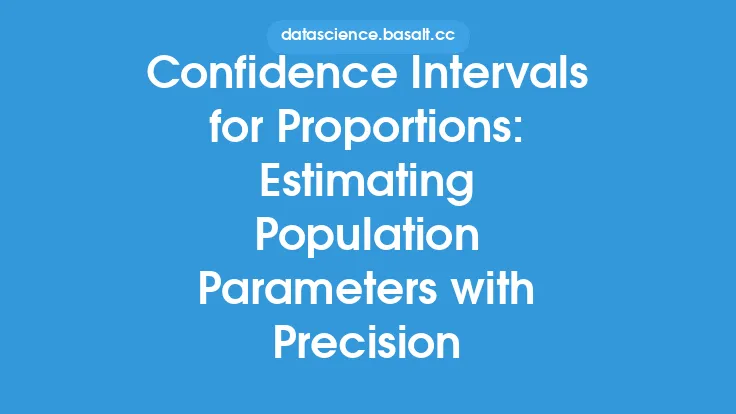When dealing with statistical data, it's essential to consider the uncertainty associated with estimates. Confidence intervals provide a range of values within which a population parameter is likely to lie, giving a sense of the reliability of the estimate. However, effectively communicating this uncertainty to stakeholders, including researchers, policymakers, and the general public, can be a challenge. Visualizing confidence intervals is a crucial aspect of statistical communication, as it enables the clear and concise presentation of complex information.
Introduction to Visualization Techniques
There are several visualization techniques that can be used to effectively communicate confidence intervals. These include error bars, which are commonly used in scientific and technical contexts to represent the uncertainty associated with a measurement or estimate. Error bars can be used to display the confidence interval for a single estimate, or to compare the confidence intervals for multiple estimates. Another technique is the use of interval plots, which display the confidence interval as a range of values on a graph. This can be particularly useful for comparing the confidence intervals for multiple estimates or groups.
Effective Use of Color and Annotation
The effective use of color and annotation is critical when visualizing confidence intervals. Color can be used to distinguish between different groups or estimates, while annotation can provide additional context and information about the data. For example, labels and titles can be used to explain the meaning of the confidence interval and the estimates being displayed. Additionally, annotation can be used to highlight important features of the data, such as the width of the confidence interval or the presence of outliers. By using color and annotation judiciously, it's possible to create clear and informative visualizations that effectively communicate the uncertainty associated with estimates.
Considerations for Different Types of Data
When visualizing confidence intervals, it's essential to consider the type of data being displayed. For continuous data, such as means or proportions, interval plots or error bars can be effective. For categorical data, such as odds ratios or risk ratios, forest plots can be used to display the confidence interval for each category. Forest plots are a type of plot that displays the estimate and confidence interval for each category, along with a summary estimate and confidence interval. This can be particularly useful for comparing the confidence intervals for multiple categories or groups.
Technical Considerations
From a technical perspective, there are several considerations that must be taken into account when visualizing confidence intervals. One key consideration is the choice of confidence level, which determines the width of the confidence interval. A higher confidence level will result in a wider confidence interval, while a lower confidence level will result in a narrower confidence interval. Another consideration is the type of interval being displayed, such as a symmetric or asymmetric interval. Symmetric intervals are centered around the estimate, while asymmetric intervals are not. Additionally, the choice of software or programming language can affect the visualization, with some packages or languages offering more flexibility and customization options than others.
Best Practices for Visualization
There are several best practices that can be followed when visualizing confidence intervals. One key principle is to keep the visualization simple and uncluttered, avoiding unnecessary features or annotations that can distract from the main message. Another principle is to use a consistent color scheme and annotation style throughout the visualization, to avoid confusion and ensure clarity. Additionally, it's essential to consider the audience and purpose of the visualization, tailoring the display to the needs and level of understanding of the stakeholders. By following these best practices, it's possible to create clear and effective visualizations that communicate the uncertainty associated with estimates.
Common Challenges and Limitations
Despite the importance of visualizing confidence intervals, there are several common challenges and limitations that can arise. One challenge is the difficulty of communicating complex statistical concepts to non-technical stakeholders, who may not be familiar with the underlying statistical theory. Another challenge is the risk of misinterpretation, where stakeholders may misunderstand the meaning or implications of the confidence interval. Additionally, there may be technical limitations or constraints, such as the availability of software or programming languages, that can affect the visualization. By being aware of these challenges and limitations, it's possible to develop strategies to overcome them and create effective visualizations.
Future Directions and Emerging Trends
The field of statistical visualization is constantly evolving, with new techniques and technologies emerging all the time. One emerging trend is the use of interactive visualizations, which allow stakeholders to explore and interact with the data in real-time. Another trend is the use of animated visualizations, which can be used to display changes or trends in the data over time. Additionally, there is a growing interest in the use of non-traditional visualization formats, such as virtual or augmented reality, to display statistical data. By staying up-to-date with these emerging trends and technologies, it's possible to create innovative and effective visualizations that communicate the uncertainty associated with estimates in new and exciting ways.





